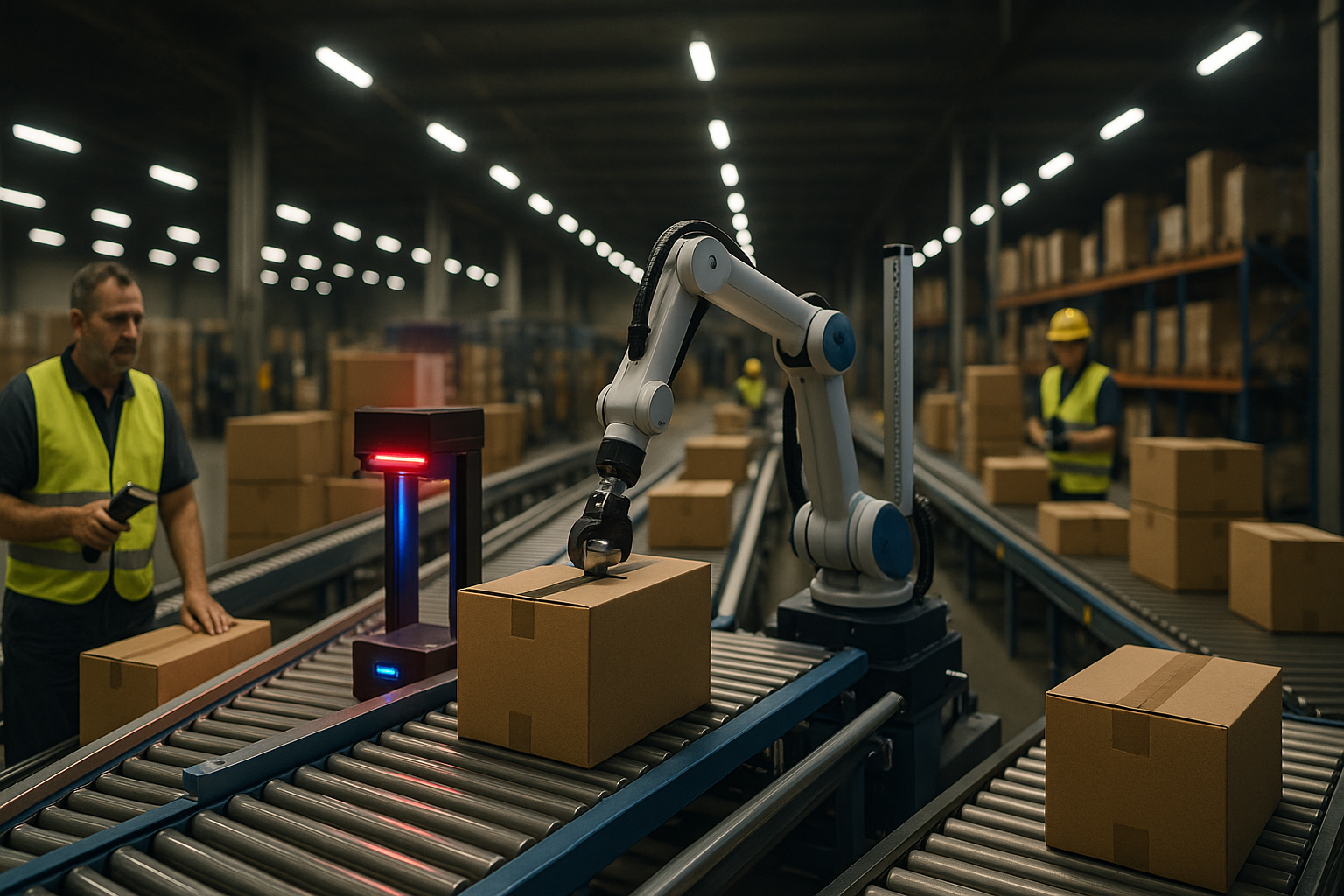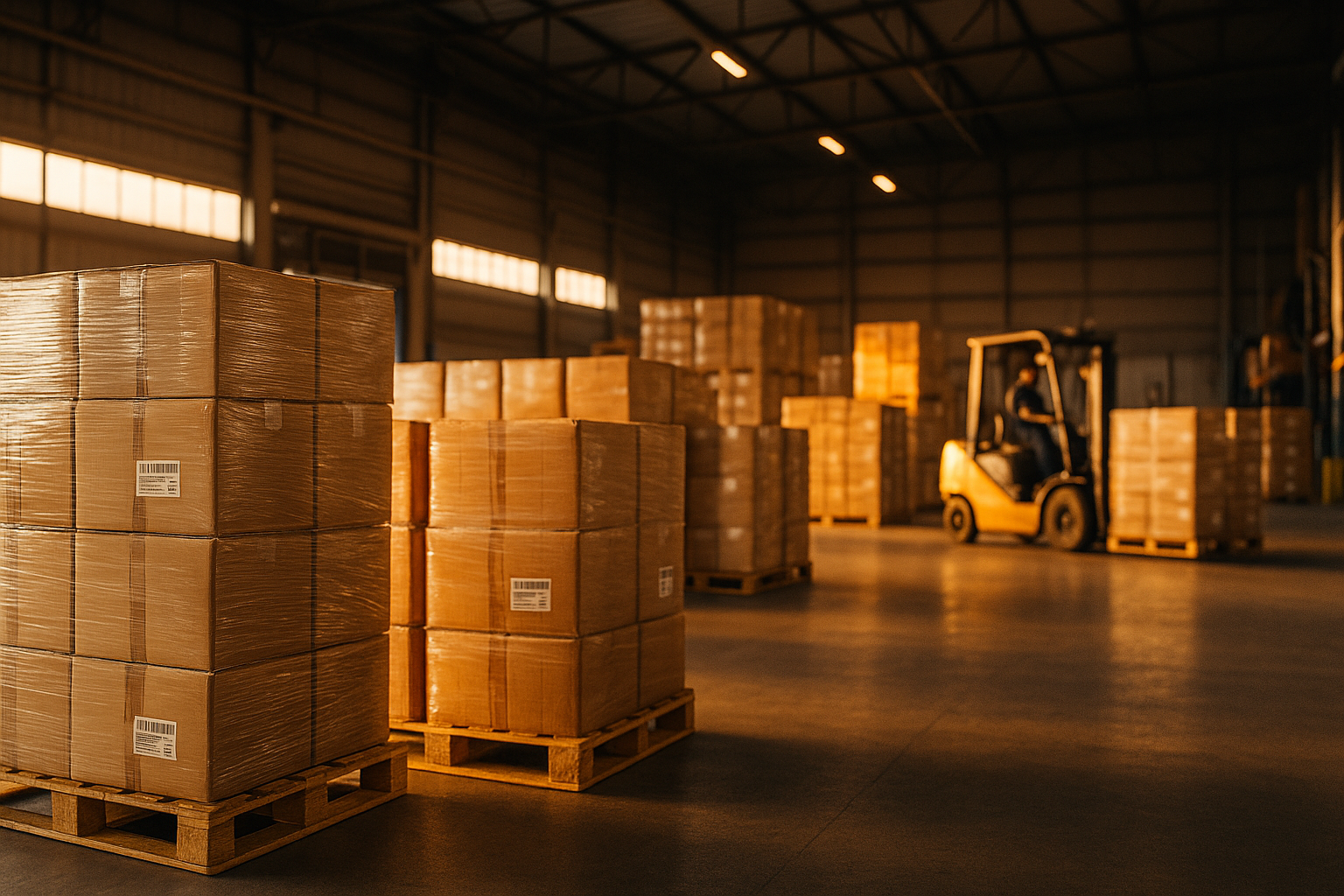Freight shipping is a cornerstone of supply chain operations, but it often comes with high costs.
By implementing effective packaging strategies, businesses can achieve significant cost savings, lower shipping costs, enhance sustainability, and improve customer satisfaction. This article provides actionable tips for optimising freight packaging, which can reduce shipping costs while maintaining product integrity and streamlining operations.
To learn how technology can further improve your freight process, visit cario.com.au

Let's Get Straight to the Point
Optimising freight packaging reduces shipping costs, improves efficiency, and enhances customer satisfaction.
Key strategies include assessing current packaging practices, streamlining packaging design, using cost-effective and sustainable materials, minimising waste, leveraging technology, consolidating shipments, negotiating better carrier rates, and managing DIM weight.
Proper packaging processes improve product safety and reduce damages while adopting sustainable methods that help reduce the carbon footprint. Continuous improvement and data-driven insights ensure long-term cost savings and operational excellence.
Understanding Packaging Optimisation
Packaging optimisation is the process of refining packaging designs, materials, and processes to enhance cost efficiency and performance.
It aims to reduce packaging costs, minimise waste, and improve operational efficiency, resulting in a more streamlined supply chain and reducing costs.
Benefits of Packaging Optimisation
Reduces Shipping Costs: Optimised packaging ensures better use of space, leading to lower shipping expenses.
Minimises Material Waste: Using only the necessary amount of packing materials reduces packaging expenses.
Improves Product Safety: Customised and efficient packaging designs reduce the risk of damage during transit.
Enhances Sustainability: By using sustainable materials, businesses reduce their carbon footprint.
Boosts Customer Satisfaction: Properly packaged goods arrive intact, enhancing the buyer’s experience.
Reduces Labour Costs and Storage Costs: Streamlined packaging operations save time and optimise warehouse usage, significantly lowering labour costs by minimising the resources and manpower needed for packing tasks.
By focusing on these benefits, companies can create a system that saves money and supports a more efficient supply chain management.
Assessing Current Packaging Practices
Before making changes, it’s important to evaluate existing packaging processes. This allows businesses to identify inefficiencies and uncover potential cost-saving opportunities, ultimately reducing overall shipping costs.
Identifying Areas for Improvement
Evaluate Material Usage: Analyse whether the current packaging materials are cost-effective and fit for purpose. Look for sustainable packaging material solutions that align with your budget and environmental goals.
Examine Packaging Design: Is there excessive use of materials or empty space in the shipping box? These factors increase dimensional weight and drive up transportation costs.
Consider Automation: Determine if manual processes lead to higher packing costs and whether automation can help reduce labour costs.
Analyse Customer Feedback: Packaging that consistently leads to damaged goods can negatively impact customer satisfaction.
A thorough review of these factors is essential to start your packaging optimisation journey.
Optimising Packaging Design
Effective packaging design reduces costs while ensuring product safety and operational efficiency. Additionally, optimising packaging with smaller boxes is important in reducing shipping costs.
Streamlining Packaging Design
Use CAD Tools: Leverage software to create smart packaging solutions tailored to your product’s size and weight.
Standardise Packaging: Implement uniform designs for similar products to minimise packing costs.
Reduce Dimensional Weight: Choose designs that avoid wasted space and focus on compact, protective layouts.
Incorporate Dividers and Inserts: These help secure products using less material, achieving safety and cost efficiency.
A well-thought-out packaging design not only lowers transportation costs but also contributes to substantial savings in the long term.
Selecting Cost-Effective Packaging Materials
The choice of packing materials plays a pivotal role in reducing packaging costs and achieving cost-effectiveness. Strategic adjustments in packaging optimisation and shipping practices can significantly reduce costs, enhancing overall business sustainability.
Choosing the Right Packaging Materials
Recycled or Biodegradable Materials: These provide sustainable packaging options while lowering material costs.
Lightweight Alternatives: Materials such as corrugated cardboard can reduce dimensional weight and shipping expenses.
Protective Packaging: Bubble wraps, foam inserts, and air pillows offer safety without significantly increasing additional packaging costs.
Compliance with Standards: Ensure that materials meet industry regulations to avoid complications in freight shipping.
Businesses can achieve significant savings by aligning material choices with product needs and environmental goals.

Minimising Packaging Waste and Excess
Excess packaging not only increases packing costs but also contributes to environmental harm. Eliminating waste is a win-win for businesses and the planet, reducing costs while enhancing efficiency and sustainability.
Reducing Packaging Time and Waste
Automate Processes: Automation reduces human errors, cutting time and labour costs.
Right-Size Packaging: Design packaging that perfectly fits products to avoid empty space and material waste.
Reuse Materials: Encourage reusing packaging materials wherever possible to reduce packaging costs.
Choose Sustainable Alternatives: Use biodegradable and compostable materials to support long-term sustainability goals.
Focusing on these strategies will result in cost savings and improved packaging efficiency.
Leveraging Technology for Packaging Efficiency
Technology is revolutionising freight shipping operations, enabling companies to achieve substantial savings through automation and data-driven insights.
Packaging Analytics: Use data tools to identify inefficiencies in shipping processes and optimise designs.
Robotics and Automation: Implement robotic systems to handle repetitive tasks, reducing errors and labour costs.
Smart Packaging Systems: These systems monitor shipping data to provide insights on handling, temperature, and humidity.
Adopting these technologies ensures cost reduction, improved operational accuracy, and enhanced customer satisfaction.
Consolidating Shipments and Maximising Container Utilisation
Consolidation and efficient use of shipping containers are critical to achieving cost efficiency.
Efficient Container Packing and Utilisation
Maximise Space: Avoid shipping partially filled containers by consolidating shipments.
Utilise Software: Use container packing tools to arrange items efficiently, reducing shipping volume.
Intermodal Transportation: Combine different transport methods to lower transportation costs.
These steps can lead to substantial savings in packaging expenses and overall logistics costs.
Negotiating Better Carrier Rates and Shipping Methods
Carrier partnerships significantly impact shipping efficiency and costs.
Compare Rates: Analyse rates from multiple carriers to identify the most cost-effective options.
Leverage Freight Audits: Regular audits help uncover errors in billing and identify cost-saving measures.
Optimise Shipping Methods: To reduce transportation costs, experiment with different methods, such as sea freight for bulk goods.
Proactive negotiation with carriers can dramatically lower high shipping costs.
Calculating and Reducing DIM Weight
DIM weight is a calculation based on the size of a package rather than its actual weight, and it often leads to higher packing costs.
Optimise Package Dimensions: Avoid oversized packages that increase shipping rates.
Select Lightweight Materials: Prioritise materials that reduce overall DIM weight.
Monitor Weight Thresholds: Stay within weight limits to avoid additional charges.
By carefully managing DIM weight, businesses can achieve significant cost savings.
Packing for Safety and Minimising Damages
Product damage during transit leads to replacement costs and dissatisfied customers. Proper packaging practices mitigate these risks.
Use Durable Materials: High-quality materials ensure product safety during shipping.
Secure Products with Inserts: Prevent movement inside the package to reduce damage.
Label Packages Clearly: Include handling instructions to minimise mishandling.
Safe packaging results in fewer returns and improved customer satisfaction, creating long-term loyalty.
Implementing Sustainable Packaging Practices
Sustainability in packaging and shipping expenses benefits both the environment and business goals.
Adopt Green Materials: Use recycled and biodegradable options to reduce the carbon footprint.
Minimise Material Use: Streamlined designs reduce material waste while maintaining product safety.
Educate Teams: Train employees on sustainable packaging practices for consistent implementation.
Sustainable efforts contribute to cost-effectiveness and bolster a company’s reputation.
Continuously Improving Packaging Strategies
Ongoing assessment and improvement ensure businesses stay competitive and maintain packaging efficiency.
Track Key Metrics: Monitor shipping data, including packaging costs and delivery times.
Stay Updated on Trends: Explore advancements in materials and technology to identify potential cost-saving opportunities.
Engage Stakeholders: Include input from employees and customers to refine packaging solutions.
A culture of continuous improvement drives cost reduction and ensures long-term success.

Conclusion
Optimising freight packaging is an investment in cost savings, sustainability, and operational excellence.
Businesses can significantly lower packaging and shipping expenses while enhancing customer satisfaction by focusing on smart packaging, reducing waste, leveraging technology, and embracing sustainable practices.
Apply these top tips for optimising freight packaging to save on shipping costs and achieve a more efficient and profitable supply chain.
FAQs
1. How can I reduce shipping costs through packaging optimisation?
Optimising packaging design to reduce size and weight is key to lowering shipping costs. Use sustainable materials and consolidate shipments to minimise wasted space and maximise container utilisation.
2. What are the best ways to minimise material waste in packaging?
Choose the right-sized packaging tailored to your product, and use recyclable or reusable materials. Streamlining packaging practices with efficient designs reduces excess and promotes sustainability.
3. How does DIM weight impact shipping expenses?
DIM weight is calculated based on package size rather than its actual weight. Reducing package dimensions and using lightweight materials can significantly lower shipping rates.
4. What role does technology play in packaging efficiency?
Technology such as CAD software, data analytics, and automation improve packaging processes by reducing errors, saving time, and lowering labour costs. It also enhances decision-making with insights from shipping data.
5. Why is sustainable packaging important for businesses?
Sustainable packaging reduces material waste and the carbon footprint aligns with environmental regulations, and appeals to eco-conscious consumers. It also supports cost efficiency by minimising long-term expenses.

